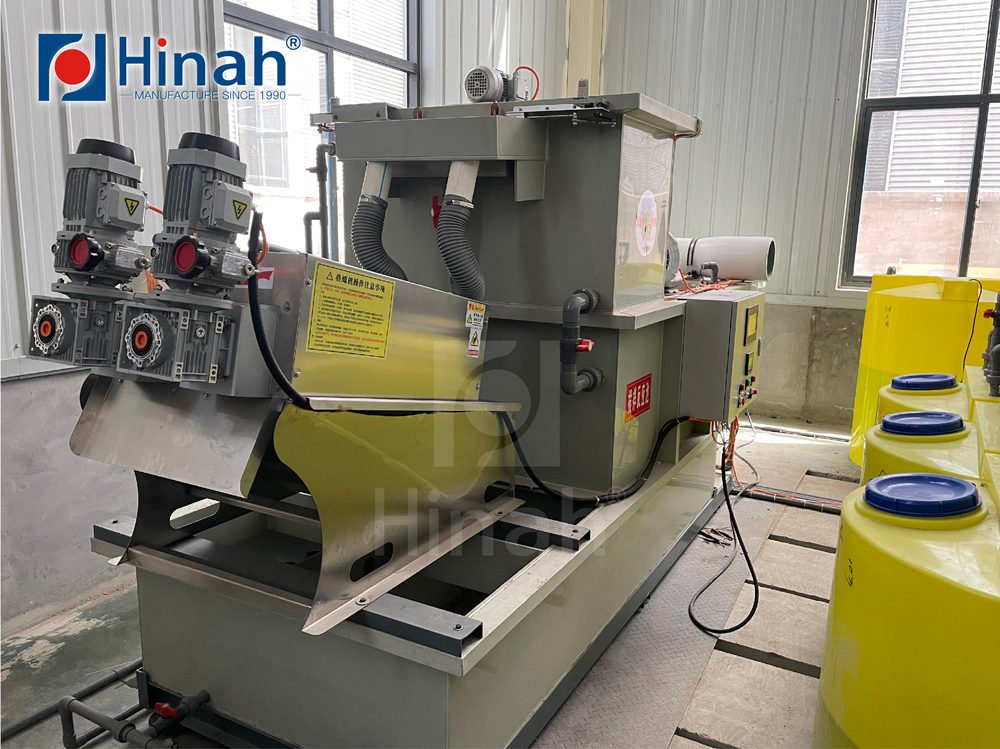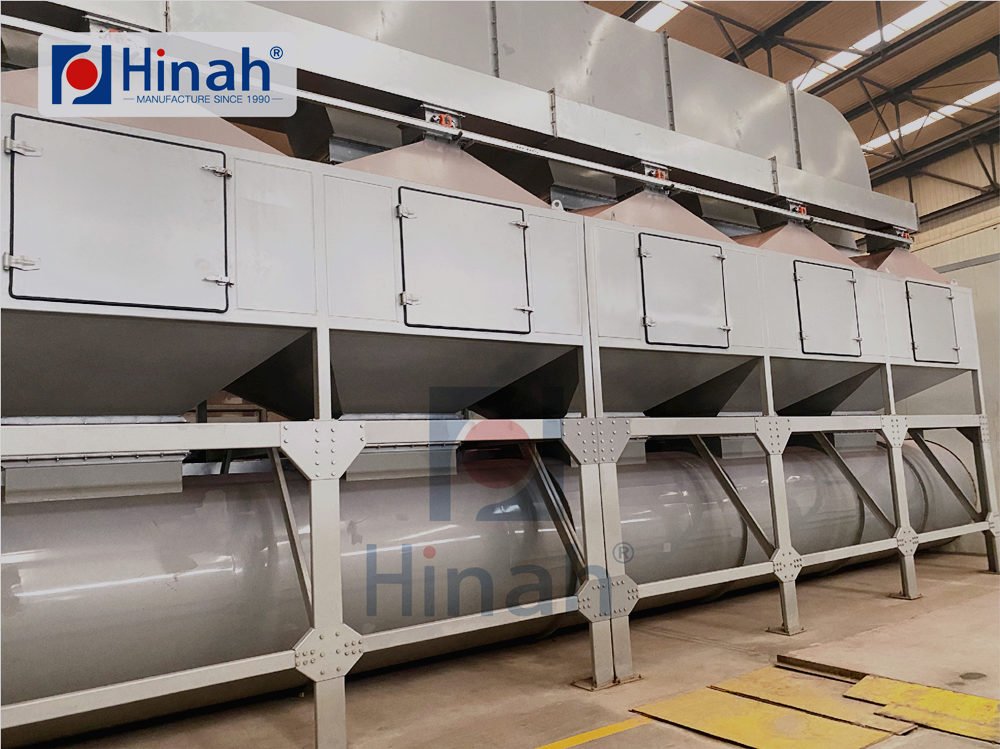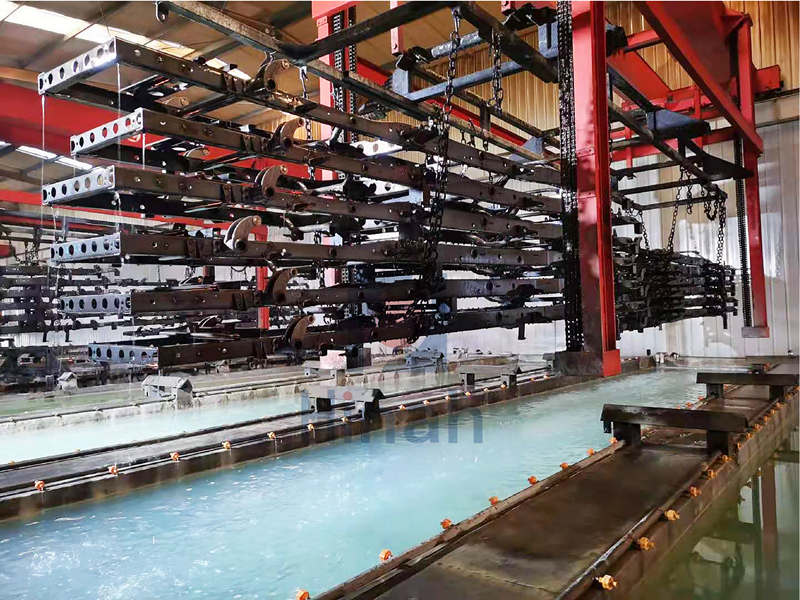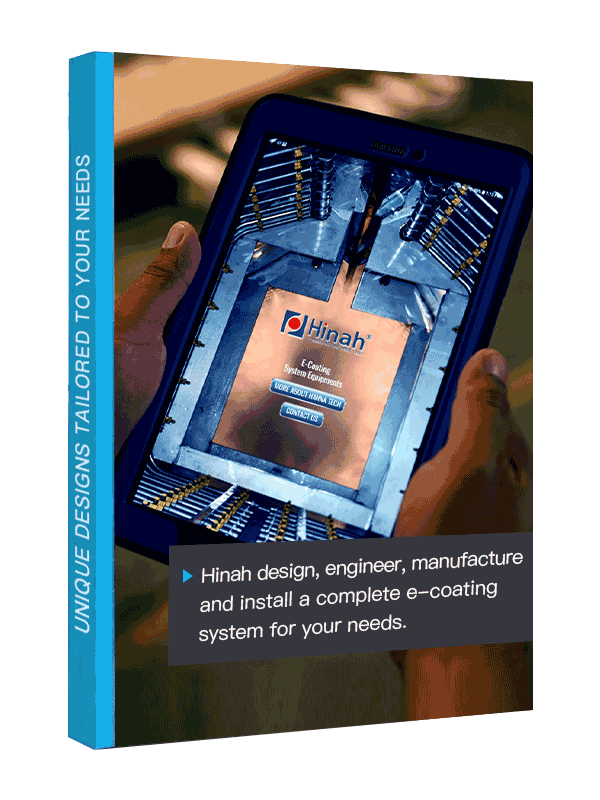Environmental Technology Equipments
Providing efficient environmental equipment with low maintenance costs
State-of-the-art exhaust gas and wastewater treatment facilities enable our production to have a limited and controlled impact on the environment. We are aware of the importance of environmental protection and are committed to implementing sustainable production methods.
- By introducing advanced exhaust gas treatment facilities, we can effectively reduce the release of emissions, filtering and treating exhaust gases to meet environmental requirements.
- At the same time, our wastewater treatment facilities use advanced technology to treat and purify wastewater, ensuring that the quality of the discharge meets environmental standards.
- The slag from the electrophoretic coating process, phosphate slag, paint spraying, and other waste products are treated harmlessly by separating the water from the slag.
Our goal is to bring water back to water and air back to air. We actively use recycling and resource recovery methods to minimize the consumption of natural resources. Through our wastewater treatment facilities, we can recycle treated water and reduce the amount of water used. The exhaust gas treatment facilities can effectively remove harmful gases and particulates, ensuring that the gases released meet environmental standards and maximize air quality protection.


Product Description
In electrophoretic painting lines, wastewater and exhaust gas treatment equipment are of importance, which is mainly reflected in the following aspects:
- Environmental protection: wastewater and exhaust gas treatment equipment exists to reduce and control the pollution of the environment by the wastewater and exhaust gas produced during the painting process. Wastewater treatment equipment can treat and purify the wastewater produced during the painting process, ensuring that the wastewater discharge meets the requirements of environmental regulations and standards. Exhaust gas treatment equipment can effectively remove harmful gases and particulates from the exhaust gas to reduce the impact on the atmosphere. With proper wastewater and waste gas treatment, the water and air quality of the surrounding environment is protected and the negative impact of production on the environment is reduced.
- Compliance requirements: The installation and use of wastewater and exhaust gas treatment plants are necessary to comply with environmental regulations and regulatory requirements. The coating industry is subject to strict environmental regulations and standards in many countries and regions. Installing wastewater and exhaust gas treatment equipment ensures that a company’s painting production meets regulatory requirements and avoids the risk of fines or enforcement action for non-compliant emissions.


- Health and safety: The use of exhaust gas treatment equipment can effectively reduce the concentration of harmful gases in the working environment, protecting the health and safety of employees. Certain exhaust gases from the painting process may contain harmful volatile organic compounds (VOCs) or other hazardous substances that can be harmful to human health through long-term exposure. Exhaust gas treatment equipment can remove or reduce harmful gases to below-safe standards, creating a healthy and safe working environment for employees.
- Sustainability: The operation of wastewater and exhaust gas treatment plants is in line with the concept of sustainable development. By treating and utilizing wastewater rationally, it is possible to reuse or recycle wastewater and reduce the consumption of natural water resources. Waste gas treatment plants also enable the purification of waste gases and resource recovery, such as the recovery of heat or valuable chemical substances. These measures help to reduce the waste of resources and drive businesses in a more environmentally friendly and sustainable direction.
In summary, wastewater and exhaust gas treatment equipment are important in an electrodeposition coating line, not only to protect the environment and comply with regulatory requirements but also to safeguard the health and safety of employees and to promote sustainable business development. By properly configuring and operating this equipment, the control, and management of wastewater and exhaust gases during the painting production process can be ensured and an environmentally friendly production model can be achieved.
Exhaust gas treatment equipment
Sources of exhaust gas from electrodeposition painting workshops
- 1) Exhaust from the pre-treatment and electrophoresis equipment
- 2) Exhaust from the paint spraying room and drying room.
- 3) Exhaust from the drying room
- 4) Exhaust from the paint mixing room
- 5) Ventilation in the painting plant.
Wastewater Treatment Equipment
Sources of wastewater in electrodeposition painting workshops
- 1) Overflow water from the pretreatment degreasing tank
- 2) Waste degreasing liquor from the pretreatment degreasing tank.
- 3) Overflow water from the pretreatment washing process
- 4) Wastewater from the pretreatment washing process
- 5) Waste water from the phosphating tank for cleaning and maintenance.
- 6) Acid waste liquor from pretreatment and cleaning waste liquor from tank cleaning
- 7) Wastewater from post-electrophoresis washing
- 8) Discharged electrophoretic UF fluid
- 9) Water production equipment regeneration liquid.
- 10) Washing wastewater from ultrafiltration equipment
- 11) Discharged wastewater from anode solution
- 12) Electrophoresis tank cleaning wastewater
- 13) Overflowing paint.
- 14) Filter bag cleaning wastewater
- 15) Circulating water for coalescence of overspray paint under the paint spraying room.
Waste Treatment Equipment
Sources of waste residues in electrodeposition painting workshops
- 1) Phosphating residues.
- 2) Paint dross from overspray in the paint booth
- 3) Sludge from the pre-treatment tanks.
- 4) Cleaning of sediment from the electrophoresis baths.
- 5) Various packaging materials.
Product Features
- Our goal is to bring water back to water and air back to air.
- We actively use recycling and resource recovery methods to minimise the consumption of natural resources.
- Through our wastewater treatment facilities, we are able to recycle treated water and reduce the amount of water used.
- Advanced technology, low maintenance costs.
- High processing capacity, high environmental specifications.
- Small footprint, more efficient, more energy saving.
Need a design plan, now?
FAQ
Washing equipment plays a vital role in electrophoretic spraying. Its main role is to clean the surface of the workpiece, removing grease, dirt and other impurities and providing a clean workpiece base for the coating process. Through the use of washing equipment we can ensure that the paint adheres evenly to the surface of the work piece, improving the quality and durability of the coating.
Our water washing machines offer a variety of cleaning methods to suit the needs of different workpieces. Common cleaning methods include spray, immersion and submersible. Spray is used for surface cleaning, where dirt is washed away by a high pressure stream; immersion is used for pre-treatment, where the workpiece is immersed in the cleaning solution to dissolve the dirt; and submersion is used for complex workpieces, where the workpiece is completely immersed in the cleaning solution for cleaning.
Our water washing machines provide a uniform water flow and high pressure rinsing effect through efficient cleaning methods and advanced nozzle design to ensure a thoroughly clean surface. A clean surface facilitates even paint distribution and adhesion, reducing the appearance of paint defects and imperfections and improving paint quality and durability.
Our water washing machines are designed to be simple to use and easy to operate. We offer an intuitive operator interface and control system that allows users to easily operate and monitor. In addition, our machines are equipped with automation features and intelligent design for automatic cleaning and maintenance, reducing manual intervention and management costs.
The maintenance interval for water washing equipment depends on a number of factors, such as frequency of use, type of workpiece and water quality conditions. In general, we recommend regular cleaning and maintenance to ensure the performance and effectiveness of the equipment. Our machines are equipped with intelligent monitoring and reminders to remind you of maintenance work and to ensure proper operation and a long life of the machine.


